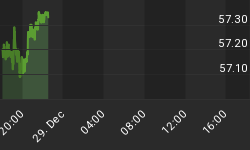There are several ways to time the launch of a new exchange traded fund (ETF). One is to strike while a sector is hot, pull in a lot of trend-following money and accept that the fund's performance might be mediocre, since the hotter the sector the more due it is for a correction. That's how it went for the Market Vectors Junior Gold Mine ETF (GDXJ), which nearly doubled in its first year of trading and is since down by more than half. (Full, painful disclosure: I've ridden that train from beginning to end.)

Another approach is to launch when a sector is out of favor, accept that you'll attract very little money up front but hope that good future performance will draw investors later on. That's what Madison NJ Pure Funds has done with its new Junior Silver Miners ETF (SILJ).
As a group these miners have truly sucked (both operationally and as investments) in the past couple of years, underperforming both silver itself and the overall stock market. This has scared away the momentum players, while intriguing contrarians and non-gold-bug value investors.
As with most small cap sectors, someone approaching silver juniors faces a lack of good information and massive company-specific risk that cries out for either months of in-depth research or immediate diversification. Which is where ETFs come in. By offering instant exposure to 20 or 30 names, they allow someone new to a sector to play while learning.
From this point of view SILJ has launched at just the right time. Its top ten holdings are a mix of familiar and unfamiliar names, almost all of which are closer to their 12-month lows than highs:

One of the downsides of introducing an ETF in an out-of-favor sector is that it won't have much initial trading volume. As this is written on the morning of February 8, SILJ literally hasn't seen a single trade. So this is not something you buy "at the market," since "the market" might be 30% higher than the next trade. Instead, choose a reasonable price and put in a good-until-cancelled bid -- and then watch it to make sure nothing crazy happens in the meantime.
And of course don't expect results right away. Trends have a habit of continuing, so the silver miners could easily have another crappy year. But at some point both silver and its derivatives (including mining shares) will start moving in the right direction. Listen to this interview with Sprott Asset Management's Rick Rule for inspiration.
















